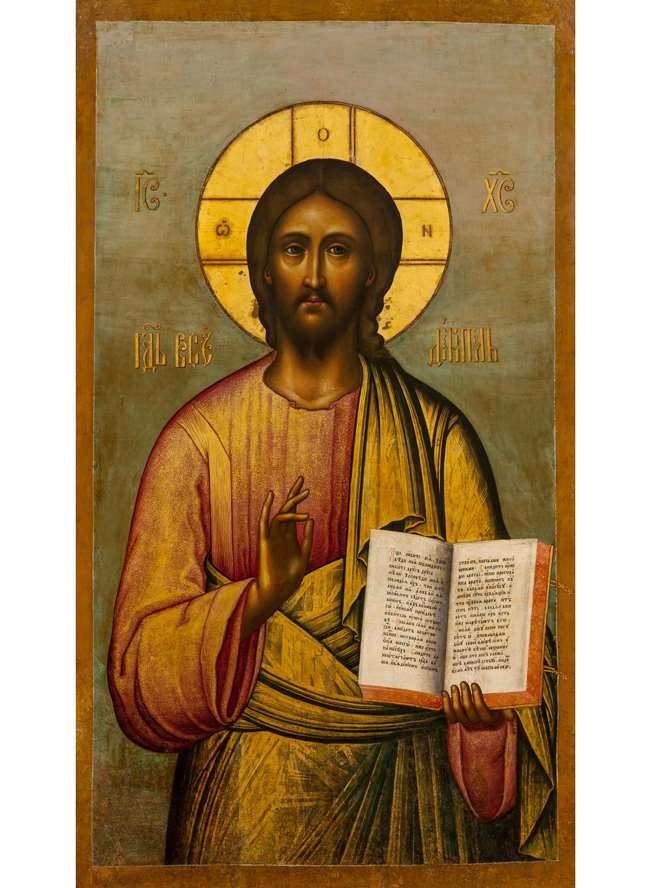THE ICON “LORD THE ALMIGHTY”

Simon Fyodorovich Ushakov (1626 - 1686) was a famous Russian iconographer and graphic artist. In the icon “Lord Almighty” the artist, while maintaining the traditional type of Savior, used a new style of painting and techniques. The appearance of Christ loses its monumentality, as if approaching a human.
New vision of art were outlayed in the theoretical works of Simon Ushakov and his friend and associate, Tsar’s iconographer Joseph Vladimirov, who in one of the first treatises on art “The Message to Simon Ushakov from Joseph Vladimirov” defended realistic manner of painting icons and urged to paint “light and rosy, shadowy and beautiful”.
Originally the icon was in a stone cathedral of Gregory of New Caesarea, which was built in 1668 - 1669 under the supervision of the Confessor of Tsar Alexei Mikhailovich, the archpriest of the Annunciation Cathedral of the Moscow Kremlin, Andrey Savvinov. It was at this time that the Church councils were held in Moscow, which marked the victory of the grecophilic policy of Tsar Alexei Mikhailovich. Pro Greek aesthetic concept became Central within system of murals of the Church of Gregory of New Caesarea.
The icon “Lord Almighty” was to the right of the Tsar’s (Royal) gates. This image represents heyday of Simon Ushakov. The fine stylization, based on the Greek-Byzantine tradition, is combined with the “true imaging” of illusory personal visions, gradually playing an increasingly important role in the evolution of the artistic method of Russian icon painters. The iconographic type is one of the oldest and widespread in Byzantine and Old Russian art. The composition features - the shape of the “roll” sleeve, the cutout on the neck of the chiton, the chiaroscuro of shimmering specks of gold that form folds and open areas of the background, the characteristic paleography – were frequently repeated in the works followers of the artist. The hand gesture signifies a call for the utmost attention and points to open Code in the Savior's left hand, where nine liturgical texts of the evangelists John, Matthew and Luke alternate – a detail that is found on later Greek icons. Expanding Greek-Russian relations in the XVII Century contributed to create a new iconographic tradition in Russia.
